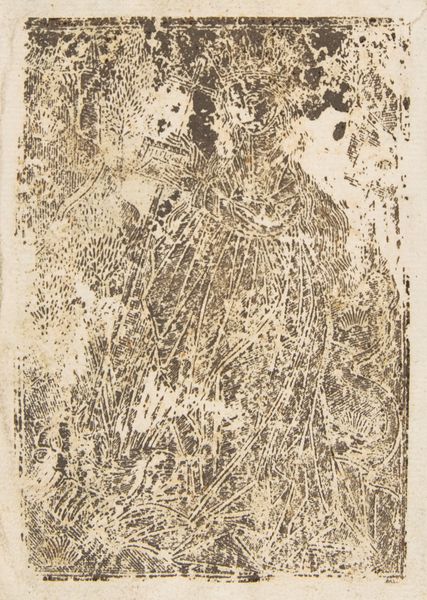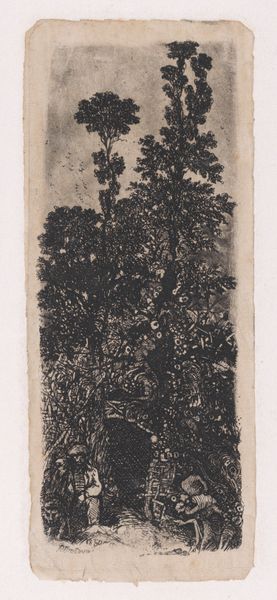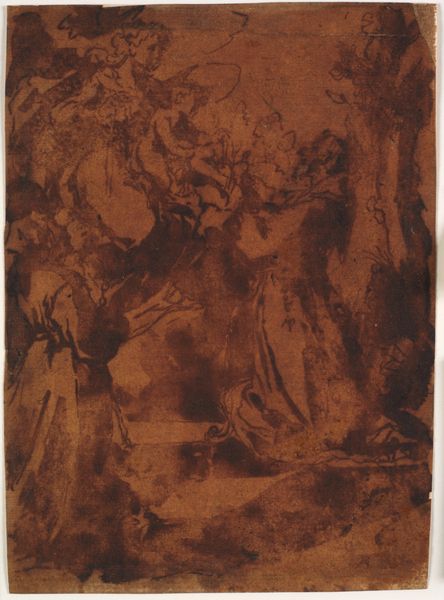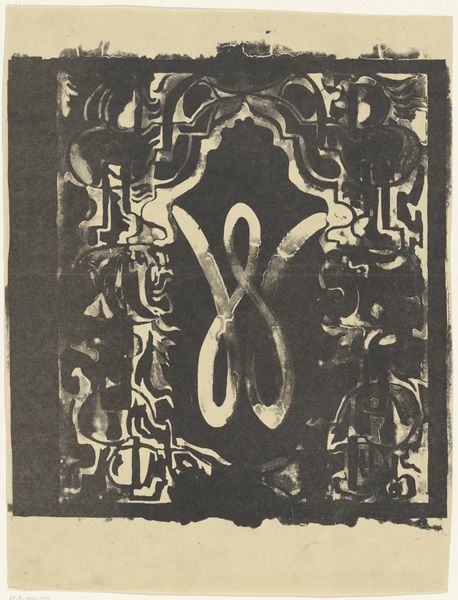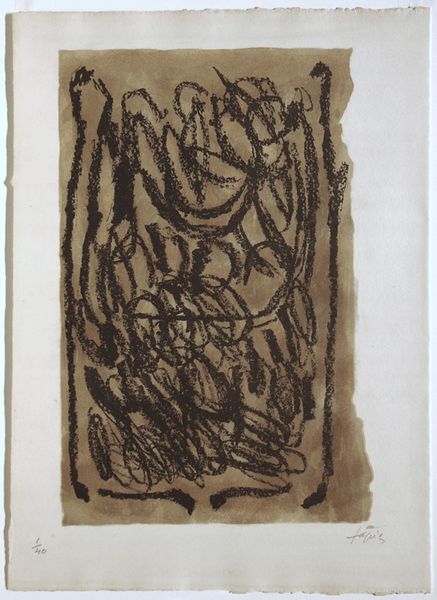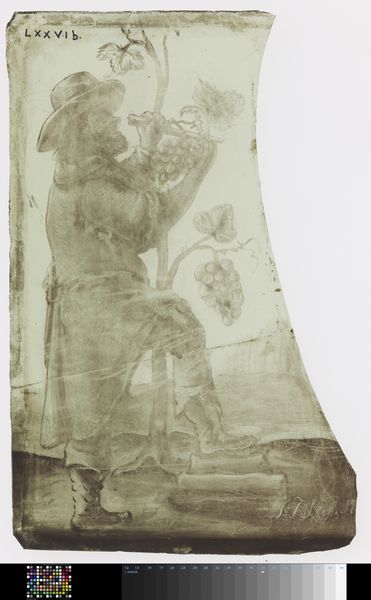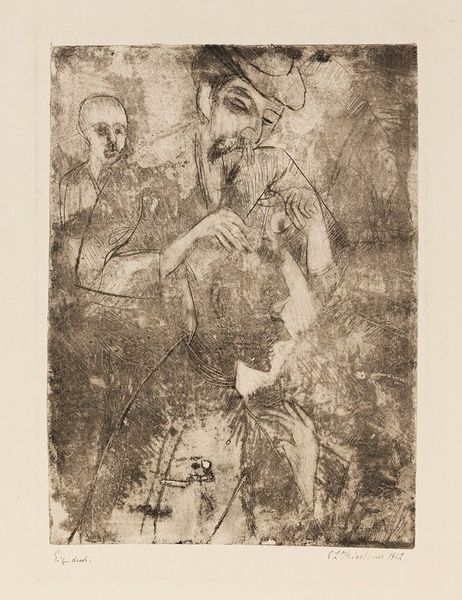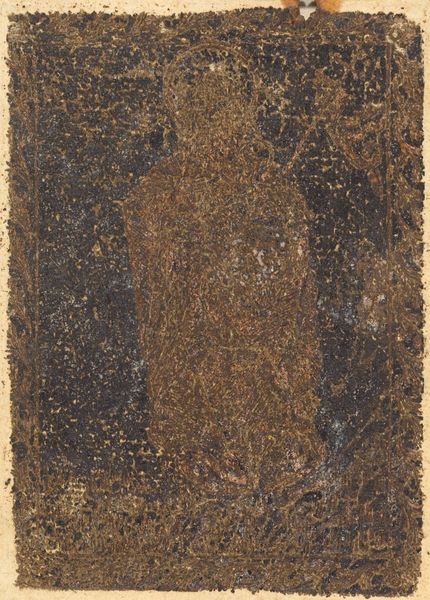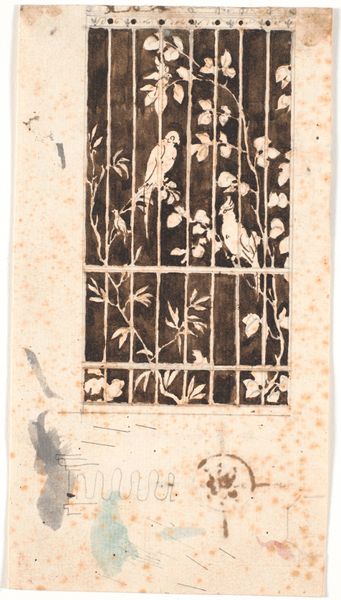
La Tentation de Saint Antoine (The Temptation of St. Anthony) 1839 - 1885
0:00
0:00
drawing, print, etching
#
drawing
#
narrative-art
# print
#
etching
#
landscape
#
figuration
#
symbolism
Dimensions: Mount: 6 × 4 1/4 in. (15.3 × 10.8 cm) Sheet: 2 13/16 × 1 3/4 in. (7.2 × 4.5 cm)
Copyright: Public Domain
Curator: The density is immediately striking, isn't it? The sheer amount of visual information Bresdin crams into this etching is overwhelming. Editor: Indeed. I see darkness punctuated by flickers of light. "The Temptation of Saint Anthony," made sometime between 1839 and 1885. What do you make of the cultural context behind this work being displayed today at the Met? Curator: Well, Saint Anthony's struggles against temptation have resonated throughout art history. His story embodies the psychological battles we all face: the pull between piety and worldly desire. I see in this etching a reflection on that internal conflict—the halo hints to this interpretation, alongside what looks like small devilish figures swirling overhead. Editor: So, Bresdin presents a sort of stage for this internal drama? It makes one consider the role of the Church, of religion itself, in 19th-century European society, and its institutions, where doubt began to unsettle rigid orthodoxies and to imagine demons both spiritual and earthly. And it's important to consider how institutions like the Met, even now, engage with the idea of spirituality by including artwork that invites audiences to examine the past and imagine present truths. Curator: Precisely. Notice, too, how the saint's figure seems almost woven into the landscape—the line work echoing forms around him and emphasizing this conflict, both figures struggle to stand out against the busyness of their backgrounds, indicating an instability perhaps felt when experiencing temptation. The artist wants to display the inner state and mind through a kind of symbolic visual language. Editor: I see how his attire melts into the rest of the landscape—it makes you think how those battles played out publicly and privately, which can still hold a fascinating lesson in how our institutions grapple with displays of cultural value. What is truly being represented by featuring a picture of sin as the center of piety and repentance? It becomes something beyond art. Curator: That is the point exactly, a display that pushes one into awareness of one’s mind in society and to the past of it as well. This print allows us to understand the complexity of the individual struggle with societal temptations—which still resonates to this day. Editor: Right. Ultimately, by showcasing Bresdin's depiction, we ask what temptation represents at any given time in cultural history, inviting the audiences to look back to learn something about what is in front of them right now.
Comments
No comments
Be the first to comment and join the conversation on the ultimate creative platform.

